Kingbull Rover vs. Rad Power RadRover 6 Plus: Off-Road E-Bike Showdown
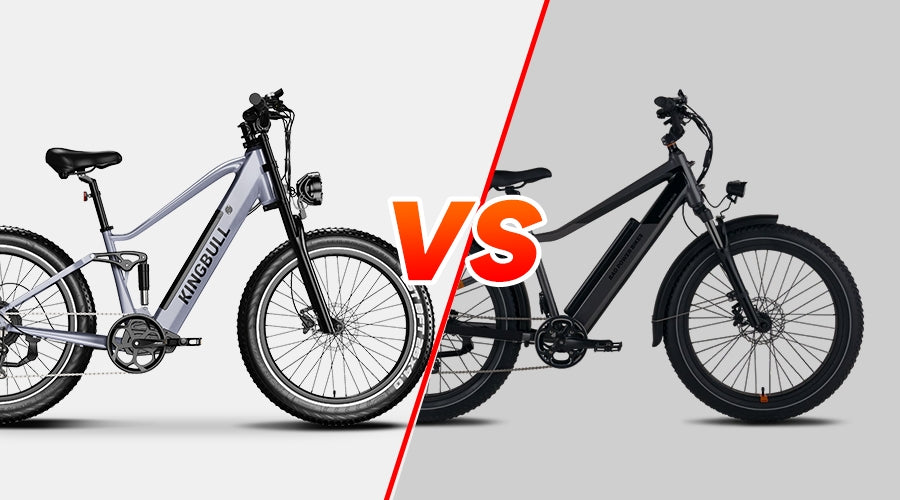
In the vast realm of electric bicycles, the powerful off-road models, Kingbull Rover and Rad Power RadRover 6 Plus, have garnered significant attention. This article delves into a thorough comparison of these two remarkable off-road electric bikes, unveiling their differences in performance, design, and adaptability to various terrains. Which one, Kingbull Rover or RadRover 6 Plus, is better suited for your adventurous needs? Let's explore this showdown between off-road electric bikes.
Performance Overview
| Rover | RadRover 6 Plus | |
| Motor | 48V 750W Brushless Rear Hub | 750W brushless geared hub motor |
| Battery | 48V 17.5Ah Lithium Battery | 48V 14Ah Lithium Battery |
| Speed | Up to 28 mph | Up to 20 mph |
| Range | Up to 60 miles | 25-45 miles per charge (estimate) |
| Pedal Assist | 5 Levels | 5 Levels |
| Brakes | Hydraulic | Hydraulic |
| Throttle | Half Twist | Half twist |
| Sensor | Cadence | Cadence |
| Gears | Shimano 7-Speed | Shimano 7-Speed |
| Weight | 77 lbs | 73.4lbs |
| Payload Capacity | 440 lbs | 275 lbs |
| Frame | 6061 Aluminum Alloy with Internal Battery | 6061 Aluminum Alloy with semi-integrated battery |
| Wheels | 26″ x 4″ CST Fat Tires | Kenda Juggernaut 26" x 4" |
| Soft-tail | Yes | No |
| Lights |
Front: 48V LED Front Headlight Rear: Integrated taillight with brake light |
Front: Standard Rad Power Bikes LED headlight Rear: Integrated taillight with brake light |
| Display | LCD Colorful Screen with USB | 2 LCD displays |
| Step-Over | Yes | Yes |
| Price | $1,699.00 | $2,099.00 |
Motor & Battery
The electric bikes Rover and RadRover are equipped with 48V 17.5Ah lithium batteries and 48V 14Ah lithium batteries, respectively. Both of these battery capacities are sufficient to meet the demands of daily commuting. However, Rover boasts a larger battery capacity, providing more robust power support. The larger battery capacity of the Rover makes it an ideal choice for long-distance rides, catering to riders seeking higher speeds and more powerful assistance. This means that in situations requiring extended travel or greater power reserves, the Rover's battery capacity is better suited. Therefore, if you are a rider pursuing long-distance journeys or a higher-speed experience, the Rover's larger battery capacity may better meet your needs.
Speed & Range
In terms of maximum speed, Rover and RadRover present significant differences. Rover has a top speed of 28 mph, while RadRover has a top speed of 20 mph. This means that Rover offers higher performance in terms of speed compared to RadRover.
Rover's top speed of 28 mph provides riders seeking a faster-paced experience with greater flexibility. This is a notable advantage for users who pursue high-speed riding and the quick coverage of distances, especially in urban commuting or situations where a shorter travel time is desired.
On the other hand, RadRover's top speed of 20 mph is suitable for riders who prioritize comfort and stability. This speed is sufficient for general riding needs, particularly in urban environments. For users who lean towards relaxed riding, enjoy the scenery, or seek a more controlled riding experience, RadRover's speed offers a smooth and comfortable riding experience.
Rover boasts a maximum range of 60 miles, while RadRover offers a maximum range of 45 miles. Undoubtedly, due to Rover's larger battery capacity, it outperforms RadRover in terms of riding range. Providing riders with a longer distance, it is suitable for those seeking long-distance adventures or daily commuting over expansive areas, making it an ideal choice for users with such preferences. Although RadRover has a range of 25-45 miles, it still meets general riding needs. This is suitable for urban commuting or short-distance rides in the surrounding environment. While RadRover's range may be relatively shorter, its versatility lies in providing a comfortable riding experience for everyday use.
Brakes
The Rover and RadRover electric bicycles are both equipped with hydraulic brake systems, bringing forth a range of significant advantages compared to traditional mechanical brakes.
Firstly, hydraulic brakes surpass mechanical brakes in braking performance. The hydraulic brake system transmits force through fluid, providing more precise and reliable braking effects. This design enables riders to easily achieve accurate brake control, ensuring prompt stops when needed. In contrast, mechanical brakes may exhibit less stable braking performance due to factors like friction and cable expansion.
Secondly, hydraulic brakes maintain consistent performance in various weather conditions. Compared to mechanical brakes that may be affected by rainwater or mud, hydraulic brakes offer greater stability, ensuring reliable braking effects in different environments. This advantage makes hydraulic brakes particularly beneficial in unpredictable outdoor conditions.
Additionally, hydraulic brakes typically require less manual operating force, allowing riders to brake more effortlessly. This enhanced responsiveness and reduced hand fatigue make hydraulic brakes excel in long-distance rides or challenging terrains. Overall, hydraulic brakes outperform traditional mechanical brake systems in both performance and user experience.
Throttle
Rover and RadRover, two electric bikes designed for off-road adventures, both feature the Half Twist throttle. This design holds significant advantages in the realm of off-road electric bicycles. The Half Twist throttle allows riders to finely adjust the level of electric assistance, providing a more flexible and responsive control experience.
The operating mechanism of the Half Twist throttle permits riders to precisely control the intensity of electric assistance by making subtle adjustments to the position of their fingers. This nuanced control capability makes it easier for riders to navigate diverse terrains and challenges in complex off-road environments, delivering a more detailed and personalized riding experience.
Furthermore, the design of the Half Twist throttle enables riders to react quickly and adapt to ever-changing off-road conditions. With simple adjustments within the Half Twist range, riders can instantly receive responsive electric assistance, facilitating smoother traversals through mountainous terrain, trails, or other challenging landscapes.
In summary, the utilization of the Half Twist throttle in both Rover and RadRover enhances the precision of control and adaptability in off-road environments, providing riders with a more flexible and personalized riding experience. The intuitive control mechanism adds to the joy of riding, while simultaneously improving overall handling performance, making it easier for riders to adapt to various riding conditions.
Sensor
Both the Rover and RadRover electric bicycles feature cadence sensors, which adjust the level of electric assistance by monitoring the rider's pedal cadence. This design ensures a smoother response of electric assistance, delivering a more natural riding experience. Riders won't need to exert excessive effort during cycling, as the system automatically adjusts assistance based on the frequency of pedal cadence, resulting in smoother acceleration and deceleration. This proves particularly beneficial for long-distance rides and urban commuting. The simplicity and reliability of its design provide riders with a more relaxed and natural electric assistance experience.
Weight & Payload Capacity
Rover and RadRover exhibit some noticeable differences. Rover has a total weight of 77 pounds, with a maximum payload capacity of 440 pounds. In comparison, RadRover is lighter, weighing 73.4 pounds, and has a maximum payload capacity of 275 pounds.
This difference may be influenced by several factors, with one major factor possibly being the design and materials of the frame. Such a design allows Rover to be more stable and reliable when carrying heavier loads or passengers.
Frame
Kingbull Rover and RadRover both feature robust and durable 6061 aluminum alloy frames, highlighting their advantages in lightweight construction and strength. However, they differ in battery layout, with Rover adopting an integrated battery design and RadRover opting for a semi-integrated battery. Rover's integrated battery design seamlessly incorporates the battery into the frame, creating a sleek and stylish appearance. This design not only enhances the overall aesthetics of the bike but also provides better protection for the battery, reducing the risk of damage. The integrated battery layout also helps maintain the traditional look of bicycles, offering users a more discreet and integrated battery solution. In contrast, RadRover's semi-integrated battery design slightly protrudes externally, providing users with easier access for maintenance and battery replacement. This design also, to some extent, reduces the complexity of the frame, making battery maintenance more intuitive. The choice between the two designs depends on users' preferences for appearance and battery usability.
Wheels
The Rover and RadRover 6 Plus both feature wide off-road tires, specifically the 26-inch x 4-inch CST Fat Tires and the Kenda Juggernaut 26-inch x 4-inch, respectively. Firstly, the Rover is equipped with 26-inch x 4-inch CST Fat Tires. This fat tire design offers a larger contact area and better floatation, providing excellent traction across various terrains. CST is a well-known tire manufacturer, recognized for durability and reliability, delivering robust performance for riders. In contrast, the RadRover 6 Plus opts for the Kenda Juggernaut 26-inch x 4-inch tires. Kenda, a leading brand in the tire industry, has gained praise for the Juggernaut series, known for outstanding grip and maneuverability. This tire design aims to deliver superior performance in diverse terrains, offering riders increased stability and control. Both tire selections emphasize providing excellent performance in off-road and challenging terrains. Overall, these two wheel options contribute to the reliable performance of these off-road electric bikes.
Soft-tail
The Rover electric bike features a soft tail design, a relatively uncommon feature in electric bikes. Traditionally, soft tail designs are more commonly found in mountain bikes, aiming to provide a more comfortable riding experience. Rover, by incorporating a soft tail, combines the advantages of traditional bicycles to offer riders a smoother and more comfortable riding sensation. The traditional soft tail design in bicycles effectively reduces the transmission of vibrations and bumps to the rider, thereby enhancing the overall riding comfort. In electric bikes, the soft tail also provides better suspension, mitigating the impact of uneven terrain or rough surfaces on the rider's body.
Drawing inspiration from traditional bicycle design principles, Rover, through the use of a soft tail, creates a more comfortable riding experience for cyclists. This design not only sets Rover apart in the electric bike market but also underscores a commitment to rider comfort. For those seeking a smoother and more enjoyable riding experience, the introduction of a soft tail undoubtedly represents an advantage for Rover.
Price
Conclusion
Taking a comprehensive view, both the Kingbull Rover and RadRover 6 Plus showcase unique features in the electric bike market. Whether it's the powerful 750W motor, compliant electric assist system, superior braking performance, flexible throttle design, or the well-designed suspension system and all-terrain tires, each aspect caters to the diverse needs of riders. The Rover stands out with a larger battery capacity and higher maximum speed, catering to users seeking high performance and long-distance rides. On the other hand, the RadRover, with its lighter design and comfortable speed, suits riders looking for leisure and stability. In the end, regardless of the choice, both bikes offer ideal companionship for rides on city roads or rugged mountain trails.

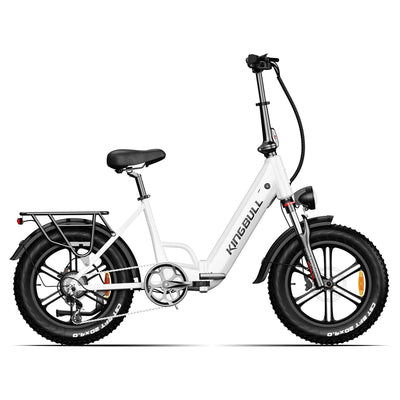
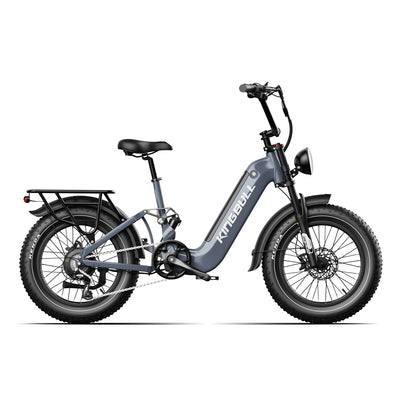
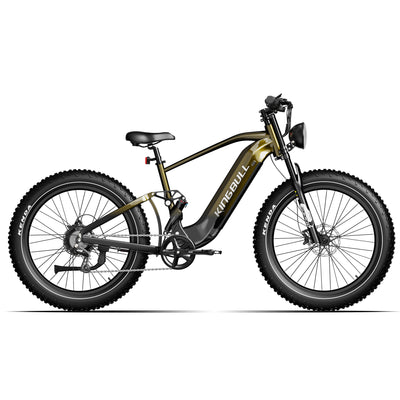

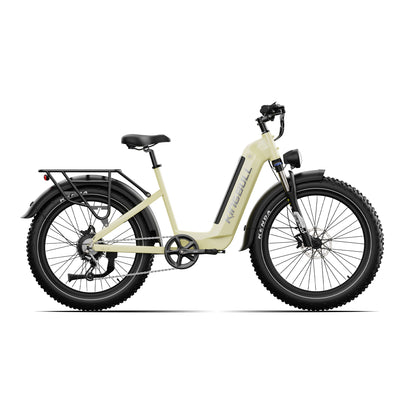
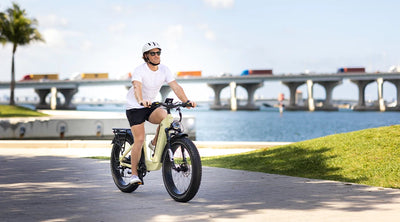
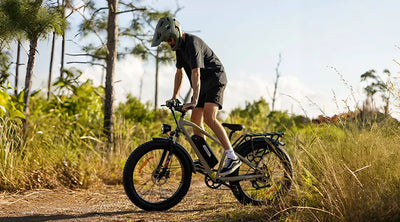
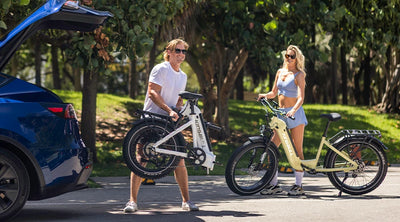
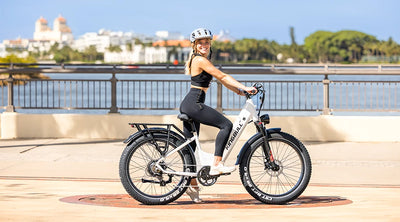
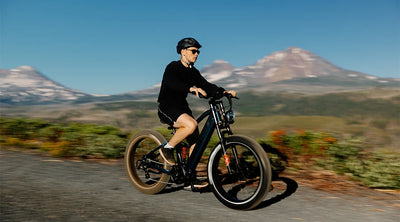







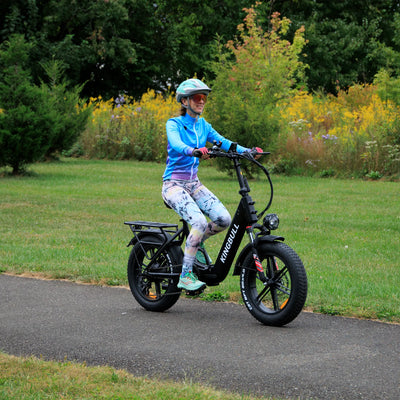



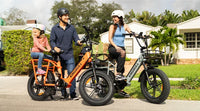







Leave a comment